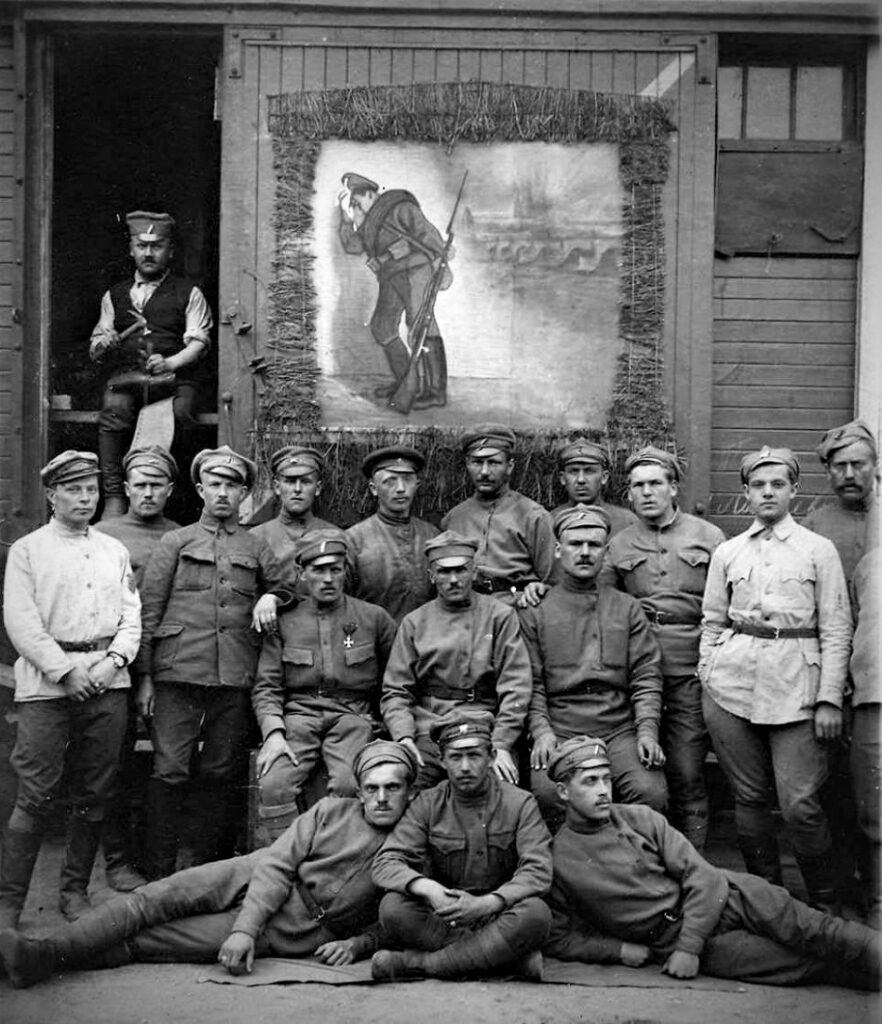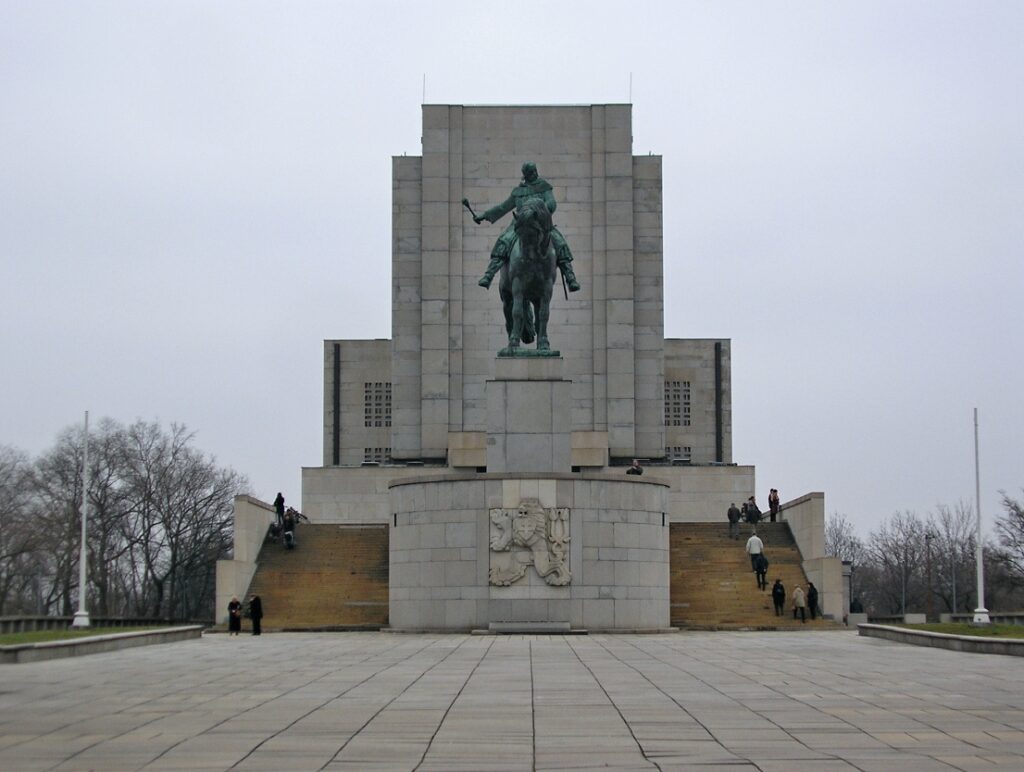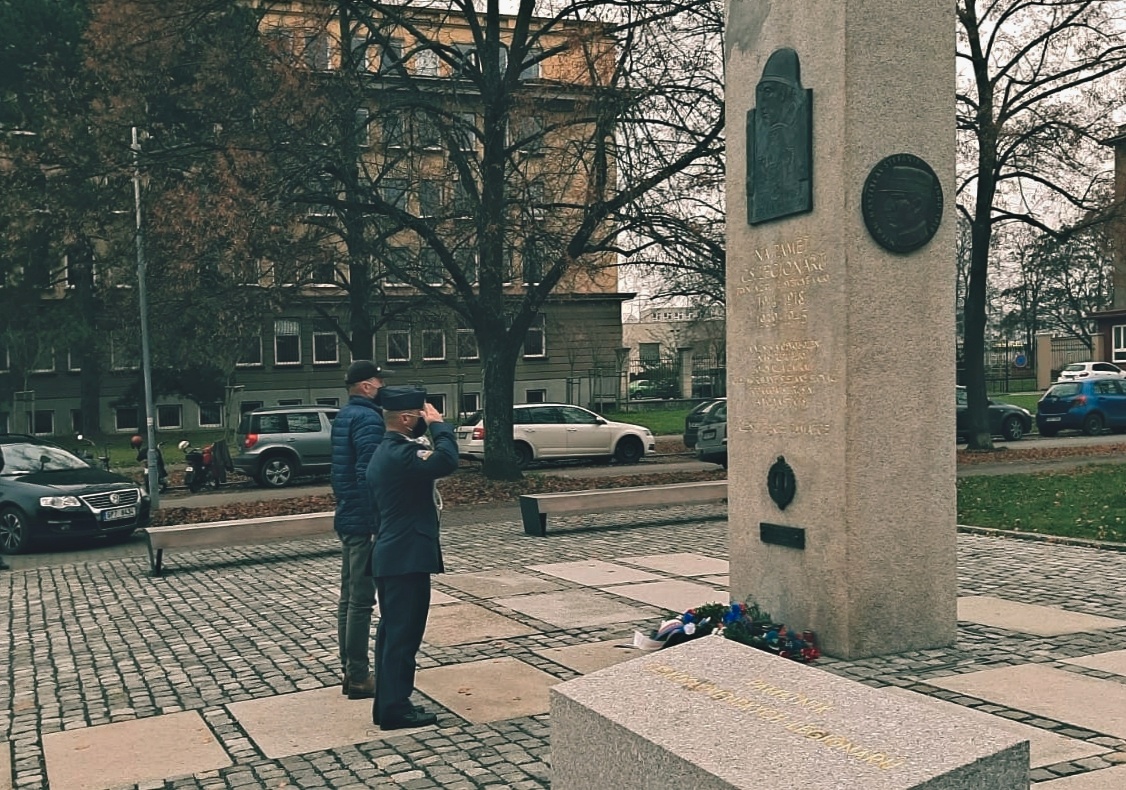Czechoslovak Legionnaires – Plzeň
Fact of the Czech figure „The creation of an independent Czechoslovakia”
Part of the „Creation of the modern states (1918-1920)” topic
During the First World War, the Czech lands and Slovakia were part of Austria-Hungary, which joined the conflict on the side of the Central Powers. During the war, however, many Czechs and Slovaks broke ideologically with this entity, which they considered anti-Slavic and undemocratic. Their goal became the creation of their own state and the fight for it. Thus, in some Entente countries (France, Russia and Italy), military units of volunteers, the so-called Czechoslovak Legions, began to emerge.
The first legions were formed as early as 1914, being recruited from exiled Czechoslovaks, defectors from the Austro-Hungarian army or captured Austro-Hungarian soldiers. The Legions took part in the battles against the armies of the Central Powers (e.g. the battles of Zborov or Bakhmach). Their successes greatly aided the Czechoslovak exile in its efforts to gain international recognition and independence. Thanks to them, Czechoslovakia was created in October 1918 on the ruins of Austria-Hungary.
After 1918, the legionnaires were celebrated in Masaryk’s republic and the state continued to use their service in the army or state apparatus. However, public respect for the legionnaires disappeared during the German occupation of the Czech lands. Legionnaires were – rightly – considered by the Nazis as a dangerous instrument of Czech patriotism and resistance movement and were persecuted. Their position improved only briefly after the defeat of Nazism.
After 1948, the ruling Communists condemned the Legionnaires for their participation in the fighting against the Bolsheviks during the Russian Civil War. The Czechoslovak Legions were briefly rehabilitated during the Prague Spring of 1968, but definitely after the fall of one-party rule in 1989. The Legionaries’ Memorial in Pilsen, the base of which is, paradoxically, a pylon that was originally part of the monument to Communist President Klement Gottwald, is its symbol. However, the most substantial monument erected in commemoration of the Legionnaires and the Czechoslovak struggle for independence is situated in Prague at Vítkov. It takes the form of a grandiose architectural structure, which is crowned with a bronze equestrian statue of Jan Žižka.







